Bonsai: The Art of Miniature Tree Cultivation
Introduction:
Bonsai, a traditional Japanese art form, is the cultivation of small trees that resemble full-sized trees, meticulously pruned and shaped to create miniature landscapes in pots. This practice is rooted in ancient Chinese horticultural techniques known as “Penjing,” which was later adopted and refined by the Japanese. The word “bonsai” itself comes from the Japanese words “bon,” meaning “tray,” and “sai,” meaning “planting.” While the aesthetic appeal of bonsai trees is obvious, the art form goes far beyond mere decoration. It reflects deep philosophical and cultural values, symbolizing harmony, patience, and balance with nature.
Bonsai is not about genetically dwarfing trees, but rather cultivating normal species to appear like ancient, full-grown trees in a miniature form. The art requires attention to detail, specialized tools, and considerable patience, sometimes taking decades to achieve the desired result. This essay delves into the history, philosophy, techniques, types, and cultural significance of bonsai, offering a comprehensive understanding of this fascinating art form.
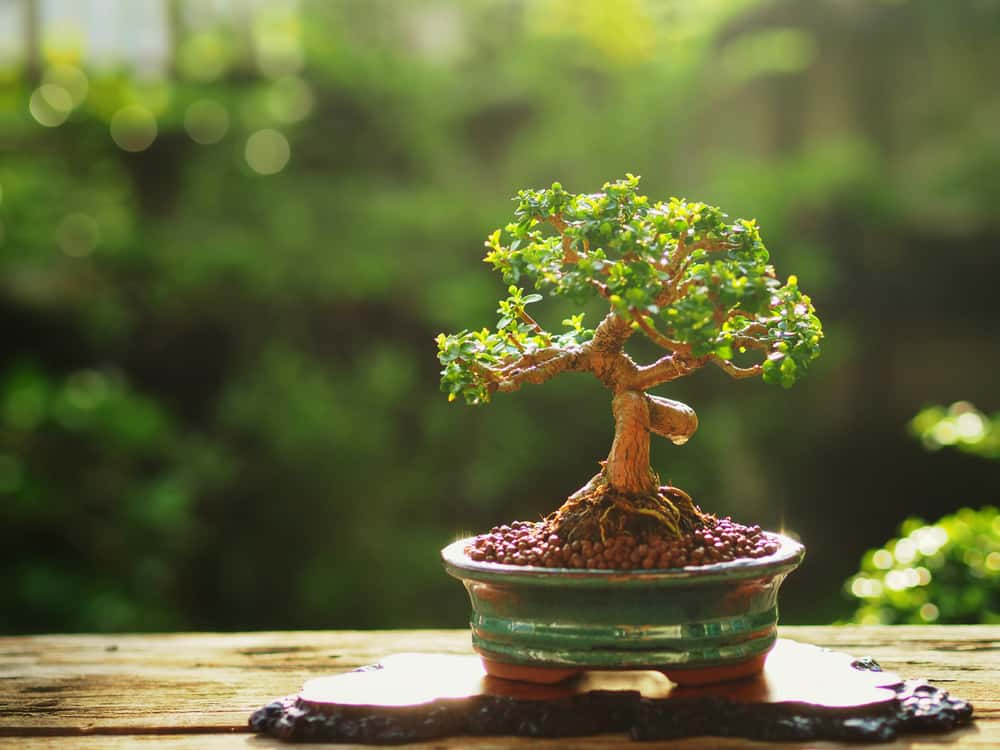
History of Bonsai
The origins of bonsai date back over a thousand years to ancient China, where the art of “Penjing” was practiced. Penjing, meaning “tray scenery,” involved creating miniature landscapes with rocks, water, and trees. Chinese monks introduced this practice to Japan during the Heian period (794-1185), where it was embraced by Japanese nobility and later developed into the modern art of bonsai.
Over the centuries, bonsai became an integral part of Japanese culture, representing nature’s beauty in a miniature, controlled environment. By the 17th century, bonsai had spread beyond the elite classes in Japan and became accessible to the general public. The principles of Zen Buddhism, which emphasize simplicity, patience, and harmony with nature, greatly influenced bonsai cultivation during this time.
Today, bonsai has become a global phenomenon, with enthusiasts and collectors across the world appreciating the skill, dedication, and philosophy behind these tiny trees. The art form has evolved to incorporate various cultural influences while maintaining its core principles of balance and harmony.
Philosophy Behind Bonsai
At its heart, bonsai is not just about growing trees in small pots; it is a deeply philosophical practice. The process of cultivating a bonsai requires an understanding of nature’s forces, time, and patience. It teaches lessons about life’s impermanence, the importance of balance, and the beauty in asymmetry.
One of the key philosophical ideas behind bonsai is the concept of “wabi-sabi,” which values the beauty of imperfection and transience. A bonsai tree often reflects this philosophy, with its gnarled trunk, twisted branches, and uneven growth patterns, symbolizing the passage of time and the natural aging process. This contrasts with Western ideals of perfection and symmetry, emphasizing that beauty can be found in imperfection.
In addition, bonsai reflects the relationship between humans and nature. By carefully shaping and nurturing a tree, the bonsai artist becomes a steward of nature, guiding its growth while respecting its innate form. This delicate balance between control and surrender mirrors the human experience of striving for control while accepting life’s unpredictability.
The Art and Techniques of Bonsai Cultivation
The art of bonsai requires mastery of several techniques aimed at controlling the size and shape of the tree while maintaining its health and vitality. These methods vary based on the type of tree, the desired shape, and the artist’s vision. Below are some of the key techniques used in bonsai cultivation:
1. Pruning
Pruning is the most fundamental technique in bonsai. It involves selectively removing branches, twigs, and leaves to shape the tree and promote desired growth patterns. There are two types of pruning: structural and maintenance. Structural pruning is done to give the bonsai its overall shape, while maintenance pruning keeps the tree healthy and prevents overgrowth. The goal is to create a balanced silhouette while ensuring the tree’s vitality.
2. Wiring
Wiring is another essential technique, used to control the direction and curvature of the branches. Thin aluminum or copper wires are wrapped around branches and gently bent into the desired shape. Over time, the branches grow in the new direction, after which the wires can be removed. Wiring must be done with care, as improper technique can damage the tree.
3. Repotting
Repotting is necessary to keep the bonsai healthy by providing fresh soil and trimming the roots. Because bonsai trees are confined to small pots, their roots need to be regularly pruned to prevent them from becoming pot-bound, which can restrict nutrient absorption. Repotting typically occurs every two to five years, depending on the species of the tree and its growth rate.
4. Defoliation
Defoliation is a technique used to reduce leaf size and promote more delicate growth. By removing some or all of the leaves during the growing season, new, smaller leaves will grow, giving the tree a more refined and miniature appearance. This technique is typically used on species like maples, which have larger leaves that can disrupt the proportion of the bonsai.
5. Deadwood (Jin and Shari)
Jin and Shari are techniques used to create the appearance of age and weathering in a bonsai tree. Jin refers to the process of stripping bark from branches to simulate the look of deadwood, while Shari involves creating deadwood on the trunk. These techniques mimic the effects of natural elements like wind and lightning, giving the tree a rugged, ancient appearance.
Types of Bonsai
Bonsai trees can be categorized by size, shape, and species. Some of the most common styles of bonsai are as follows:
1. Formal Upright (Chokkan)
This style features a straight, upright trunk with evenly spaced branches that taper as they ascend. It is one of the most traditional and symmetrical styles, symbolizing strength and stability.

2. Informal Upright (Moyogi)
In the informal upright style, the trunk bends and curves as it grows, but it still retains an overall upward direction. This style reflects the unpredictability of nature while maintaining balance.
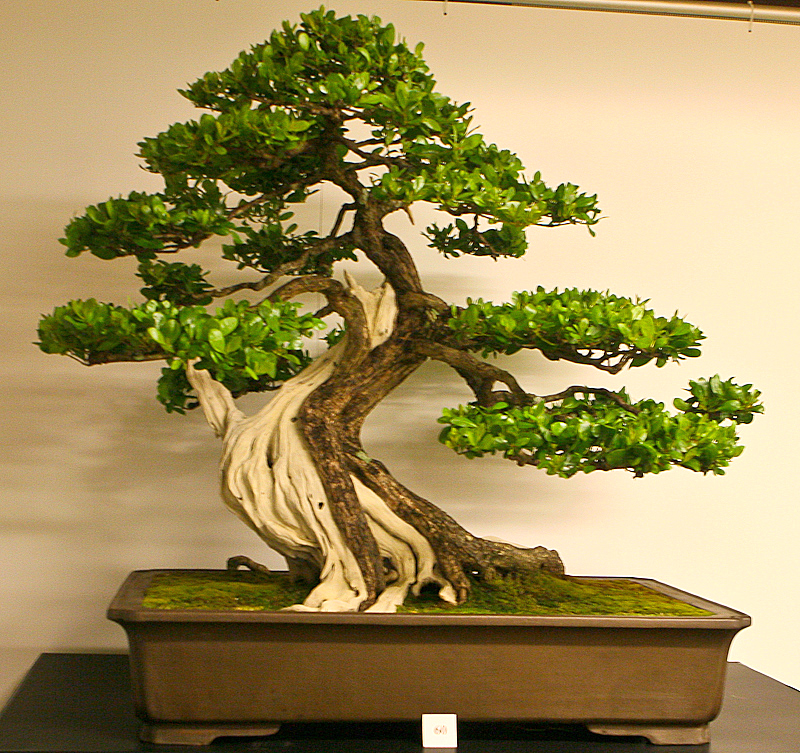
3. Slanting (Shakan)
In the slanting style, the trunk grows at an angle, giving the impression that the tree has been shaped by strong winds or natural forces. The roots on the opposite side of the slant are often more prominent to provide visual balance.
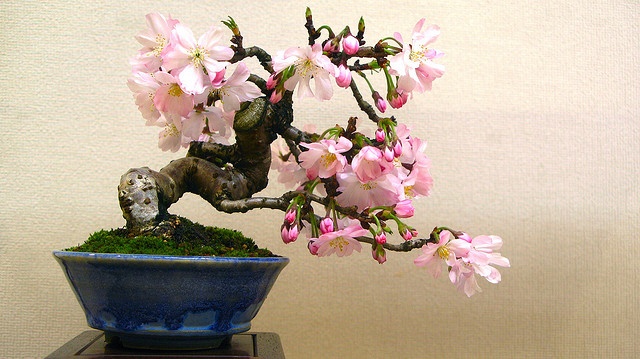
4. Cascade (Kengai)
The cascade style mimics a tree growing on a cliffside, with branches that cascade downward over the edge of the pot. This style is dramatic and challenging to cultivate, as it requires careful attention to balance and proportion.

5. Semi-Cascade (Han-Kengai)
The semi-cascade style is similar to the full cascade, but the branches only descend to the edge of the pot, rather than below it. This style often represents trees growing on mountains or riverbanks, where the trunk leans but does not fully cascade.

6. Forest (Yose-ue)
In the forest style, multiple trees of the same species are planted together in a single pot, creating the appearance of a small forest. The trees are typically arranged in odd numbers for aesthetic balance, with taller trees placed at the center and smaller ones around the edges.
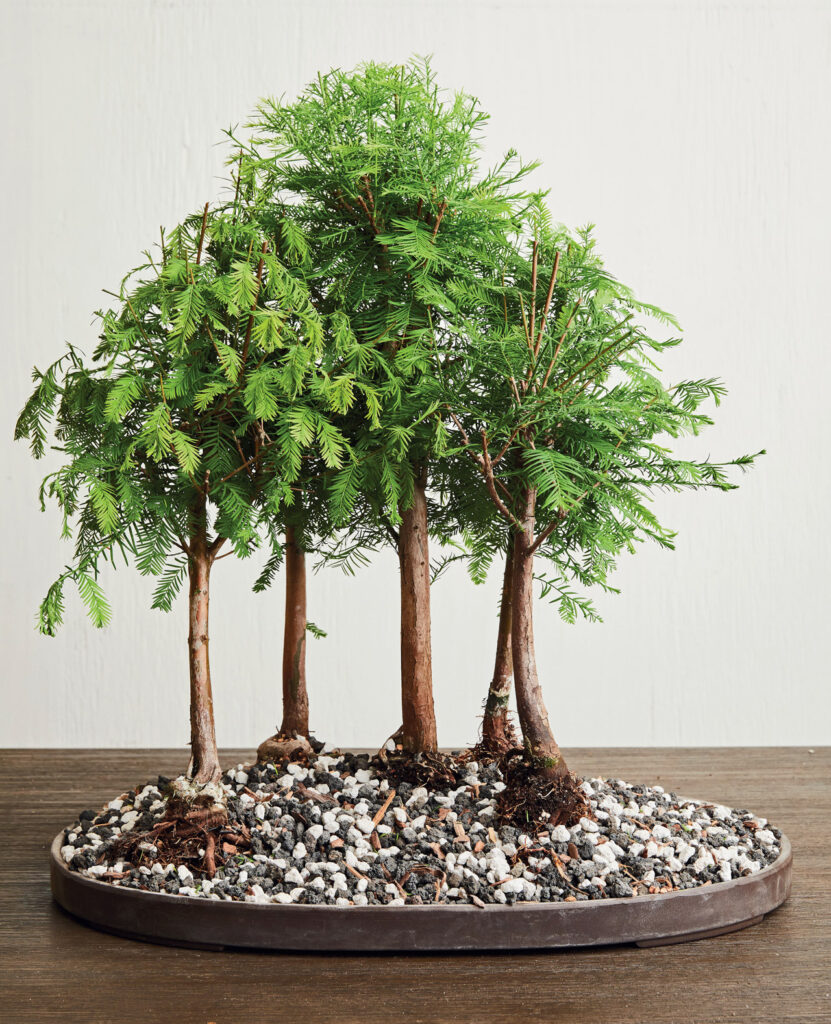
Bonsai Tree Species
While bonsai can be created from nearly any tree or shrub species, certain types are more commonly used due to their adaptability to bonsai techniques. Some popular species include:
Juniper:
A popular species for bonsai, juniper trees have flexible branches and small foliage, making them ideal for various bonsai styles.
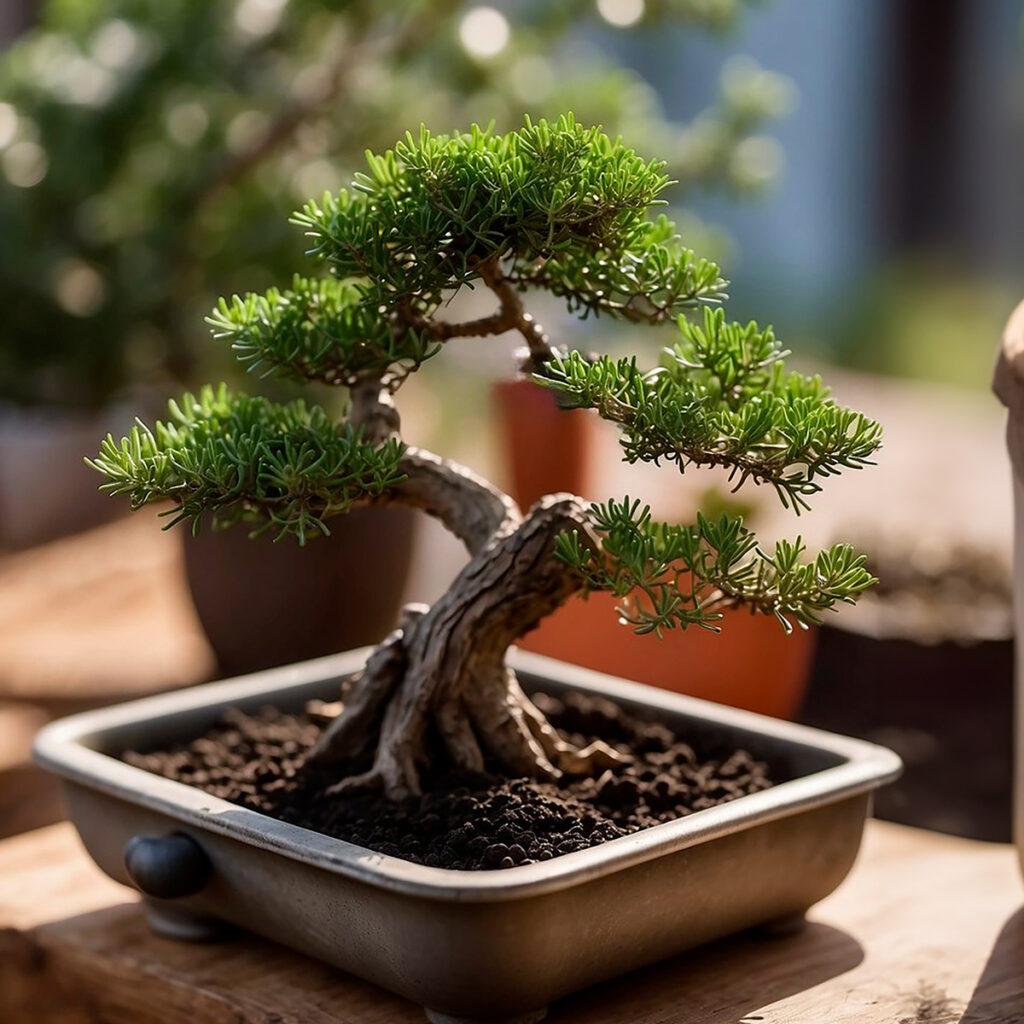
Pine:
Pines are iconic in bonsai, especially in formal upright and cascade styles. Their rugged appearance and slow growth make them a favorite among bonsai artists.
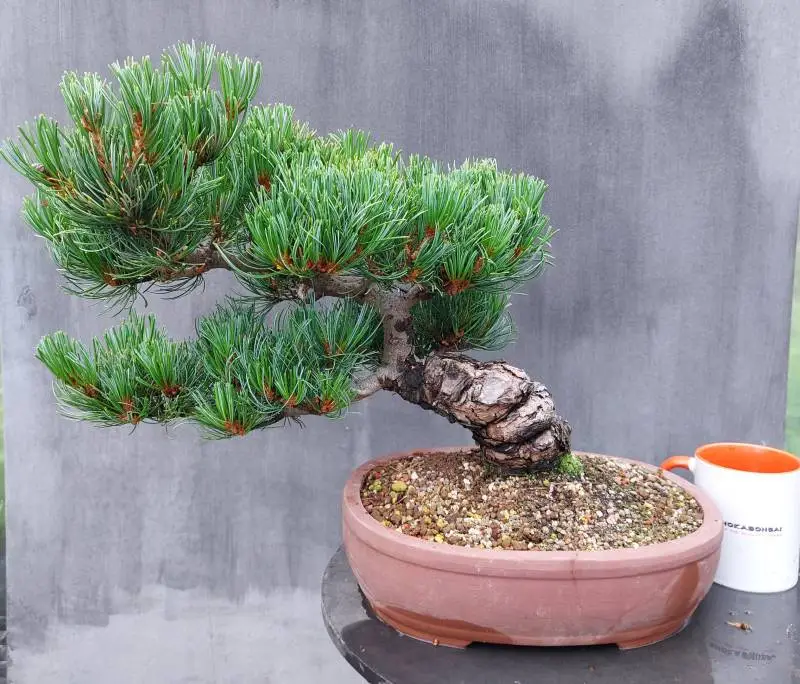
Maple:
Known for their vibrant fall colors, maples are often used in bonsai for their stunning seasonal changes and delicate leaves.
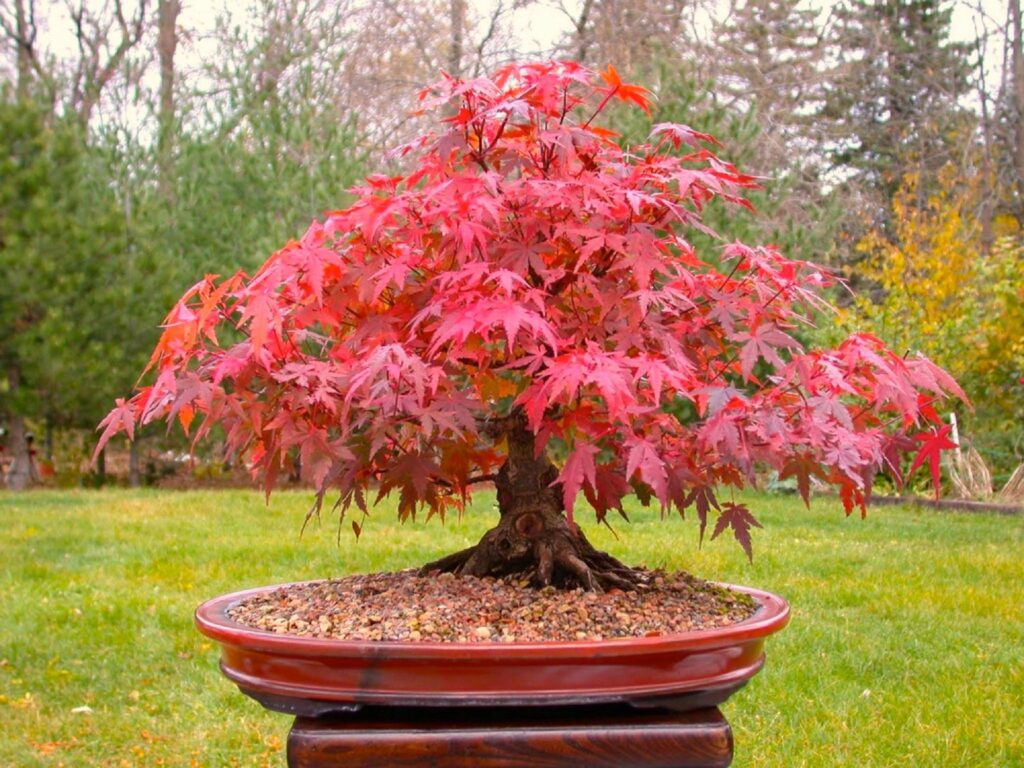
Ficus:
A tropical species, ficus is often used for indoor bonsai due to its resilience and ability to thrive in low light conditions.
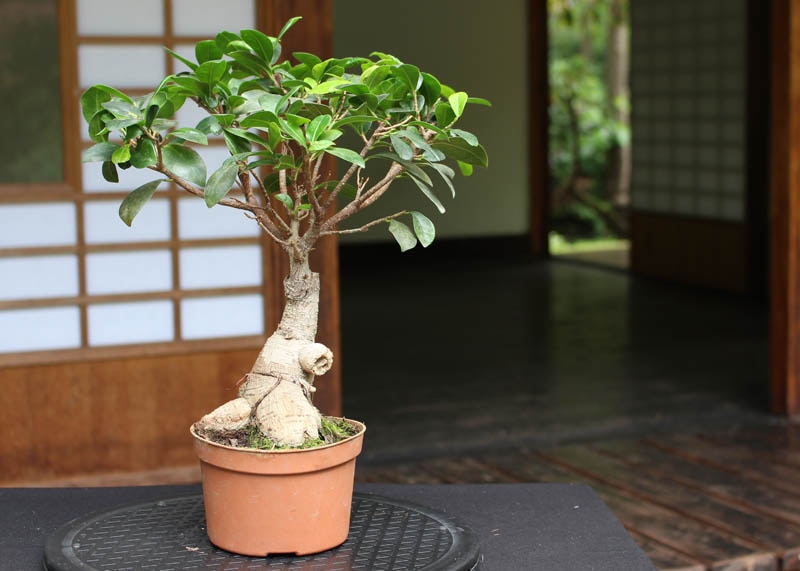
Cherry Blossom:
Famous for their beautiful flowers, cherry blossom trees are often cultivated as bonsai for their ornamental value.
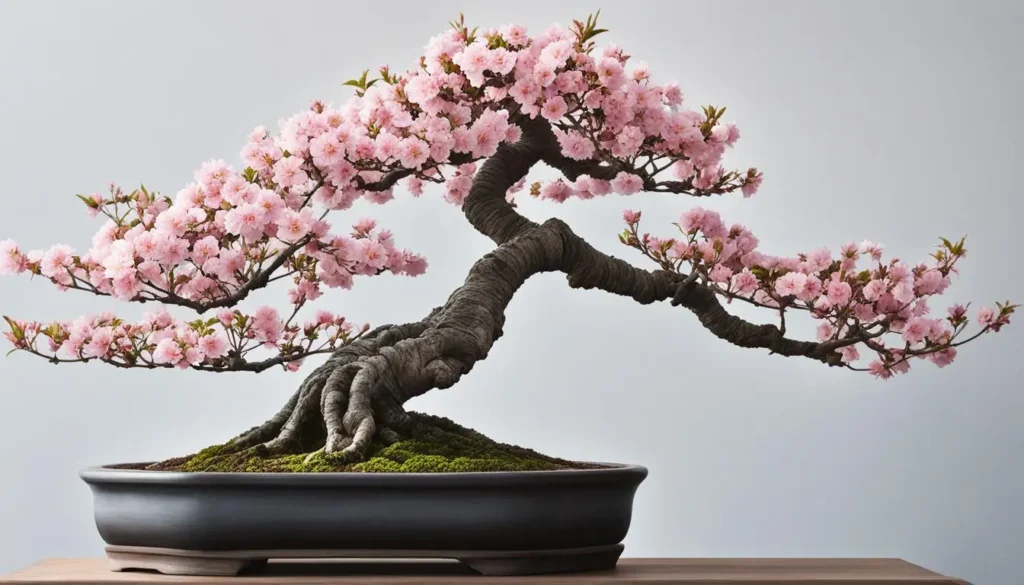
The Cultural Significance of Bonsai
Bonsai holds deep cultural significance, particularly in Japan, where it has been a symbol of harmony, balance, and the relationship between humans and nature for centuries. In Japanese culture, bonsai is often associated with Zen Buddhism, which values simplicity, patience, and mindfulness. The careful cultivation of a bonsai tree is seen as a meditative practice, a way to connect with the natural world and find peace in the present moment.
Bonsai also plays a role in Japanese aesthetics, particularly in the concept of “wabi-sabi,” which finds beauty in imperfection and transience. The gnarled branches, weathered bark, and asymmetrical shapes of bonsai trees reflect this aesthetic, reminding viewers of the passage of time and the impermanence of life.
In addition to its spiritual and philosophical meanings, bonsai has become a symbol of status and refinement. In Japan, owning and cultivating bonsai is often associated with education, sophistication, and a deep appreciation for nature. Many families pass down bonsai trees through generations, with some trees becoming hundreds of years old, cared for by multiple generations.
Bonsai in Modern Times
While bonsai has ancient roots, it has evolved in modern times to become a global hobby and art form. Today, bonsai enthusiasts around the world share their passion through clubs, exhibitions, and online communities. Modern bonsai artists experiment with new styles and techniques, often blending traditional methods with contemporary aesthetics.
Bonsai exhibitions and competitions are held globally, showcasing the skill and creativity of bonsai artists. Some of the most famous bonsai trees are displayed in museums and botanical gardens, admired for their beauty and historical significance.
Conclusion
Bonsai is more than just the cultivation of miniature trees; it is an art form that requires patience, skill, and a deep understanding of nature. Its history, rooted in ancient Chinese and Japanese traditions, reflects a profound connection between humans and the natural world. The techniques involved in bonsai cultivation, from pruning and wiring to repotting and defoliation, demonstrate the dedication required to create these living works of art.
Beyond its horticultural aspects, bonsai carries significant philosophical and cultural meanings, symbolizing balance, harmony, and the beauty of imperfection. As bonsai continues to evolve and spread across the globe, it remains a powerful expression of the human desire to connect with nature and create beauty in the smallest of spaces.
2 thoughts on “Bonsai: The Art of Miniature Tree Cultivation”
Love this blog! The content is always so relevant and insightful, keep up the great work!
I always look forward to reading your posts, they never fail to brighten my day and educate me in some way Thank you!